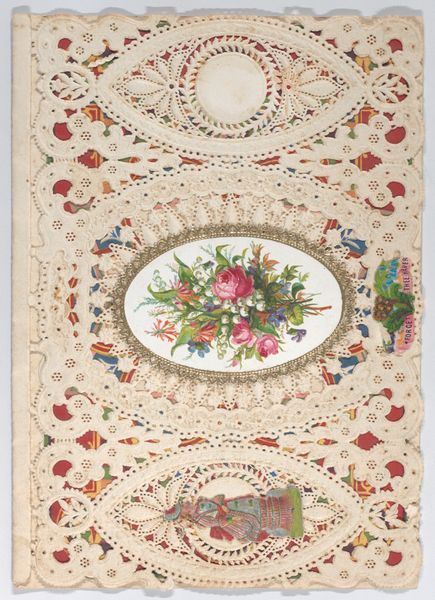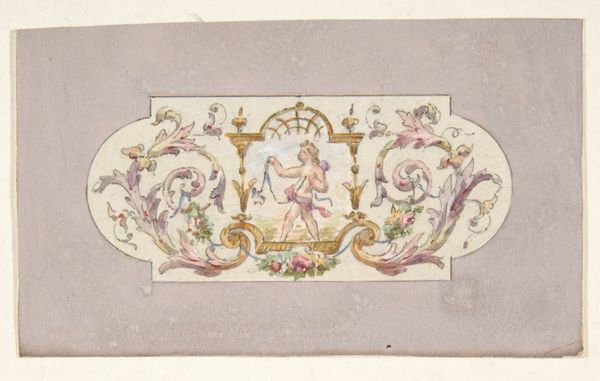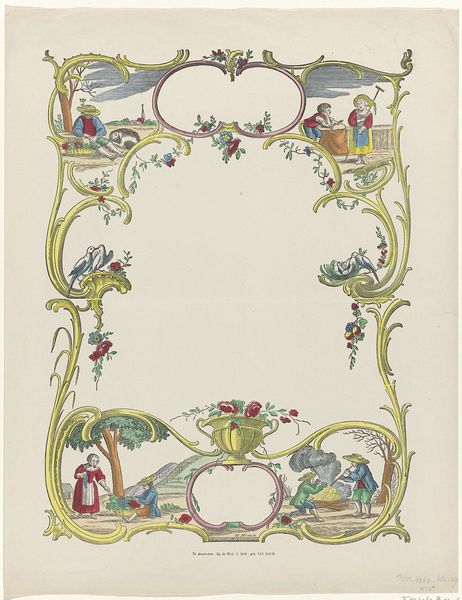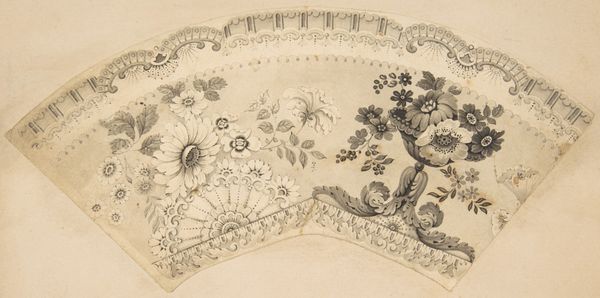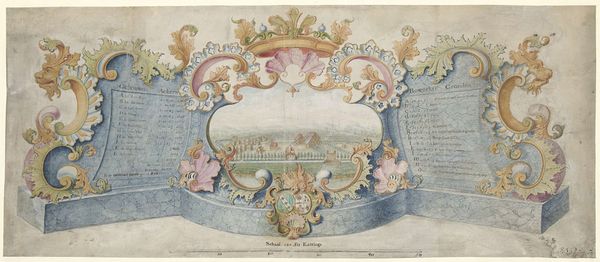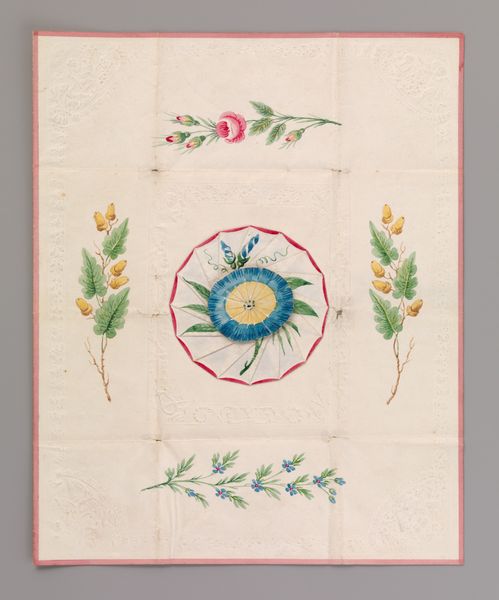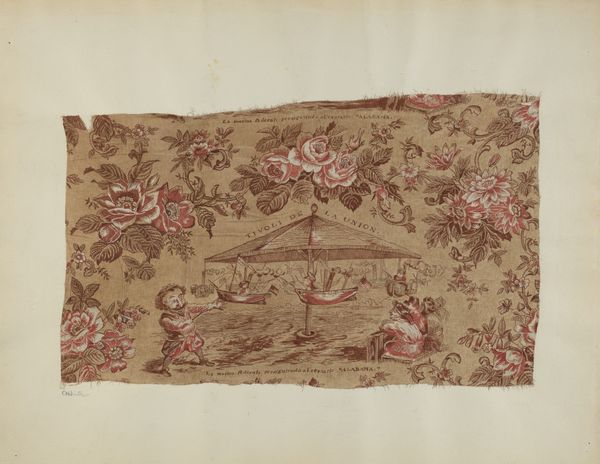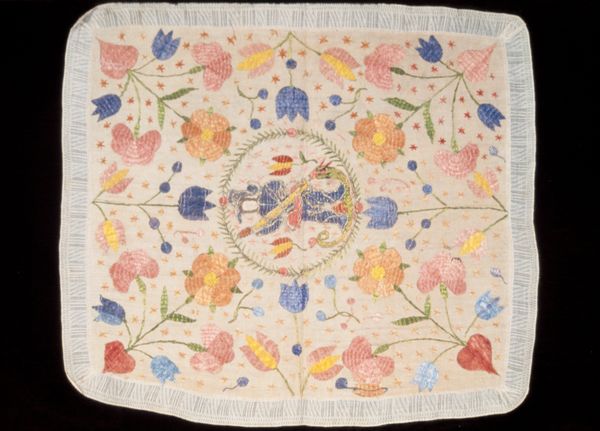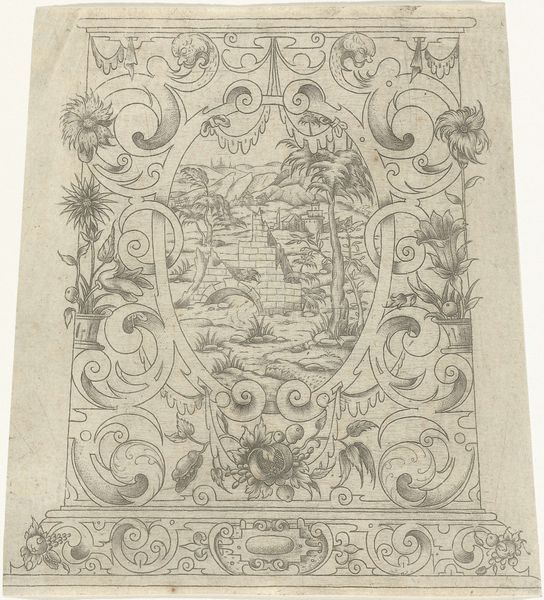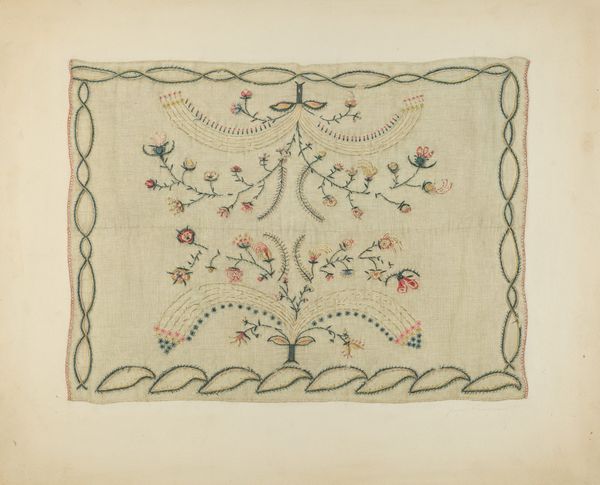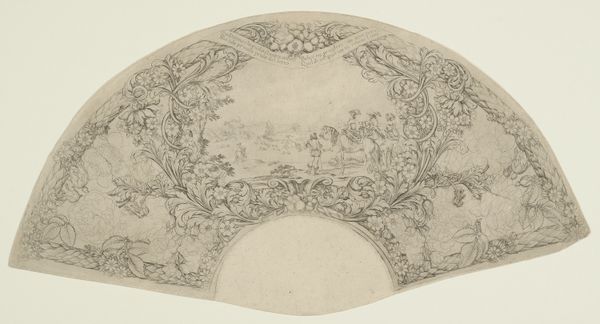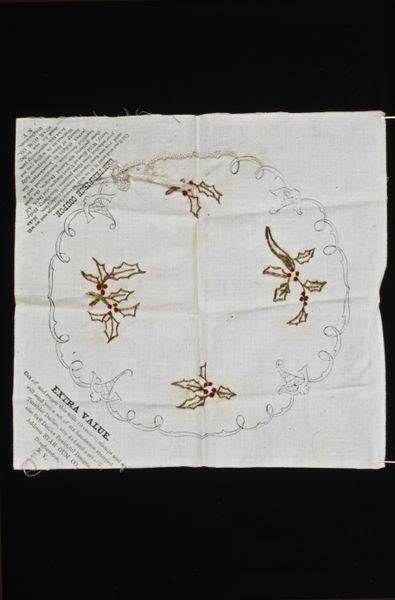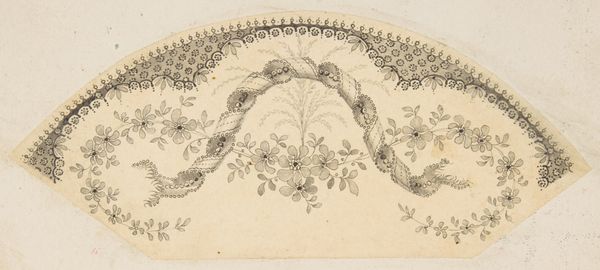
Semi-Circular Design with Grotesques and a Central Medaillon containing a Landscape 1700 - 1800
0:00
0:00
drawing, ornament, tempera, print, watercolor
#
drawing
#
ornament
#
toned paper
#
water colours
#
baroque
#
tempera
# print
#
landscape
#
bird
#
watercolor
#
coloured pencil
#
miniature
Dimensions: 5-5/8 x 12-1/16 in. (14.3 x 30.6 cm)
Copyright: Public Domain
Editor: This semi-circular design from the Metropolitan Museum of Art, crafted sometime between 1700 and 1800 by an anonymous artist, features watercolours, tempera, and coloured pencil on toned paper. It’s interesting, how the central landscape almost feels secondary to the grotesque decorations surrounding it. What’s your take on this piece? Curator: The layering of materials here is fascinating, pointing towards a production process that values ornament almost as much as representation. The “landscape” in the central medallion isn’t just a scene; it's a commodity, packaged and framed by elaborate grotesque designs. It invites a conversation about the relationship between art, craft, and consumerism in the early modern period. What was the role of ornament and materiality at that time? Editor: So you see the decoration less as just adornment and more as a reflection of the economic forces at play in art creation? Like, it says something about who was buying and commissioning art? Curator: Precisely! Think about the toned paper itself: a manufactured material providing a specific aesthetic effect. And those carefully rendered grotesques—they required skilled labor and valuable pigments. This isn't just "art"; it's a carefully constructed object reflecting specific social and economic conditions surrounding its creation. Who was involved in making each part? How did the artist obtain those colours? Editor: It’s kind of like the artist is making a statement about the commercial aspect of art even while producing it! I never considered the materiality of something like toned paper, but now I see it has a whole story to tell. Curator: Exactly. Analyzing the materials, labor, and mode of consumption reveals deeper meaning. Consider that it is also tagged as a print – hinting at a potentially wider, democratized distribution that also deserves interrogation. Editor: That's a great way to look at it, framing it as both a production and distribution challenge. Thanks for pointing that out!
Comments
No comments
Be the first to comment and join the conversation on the ultimate creative platform.
